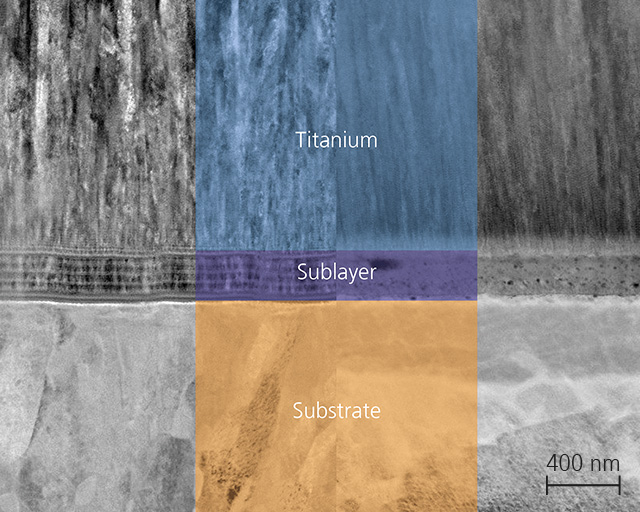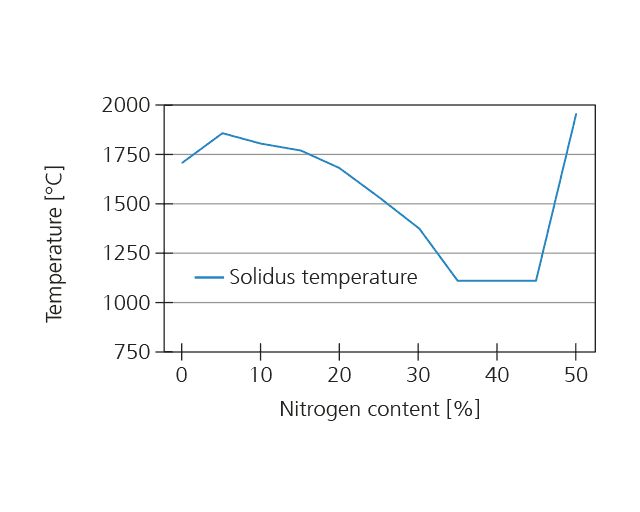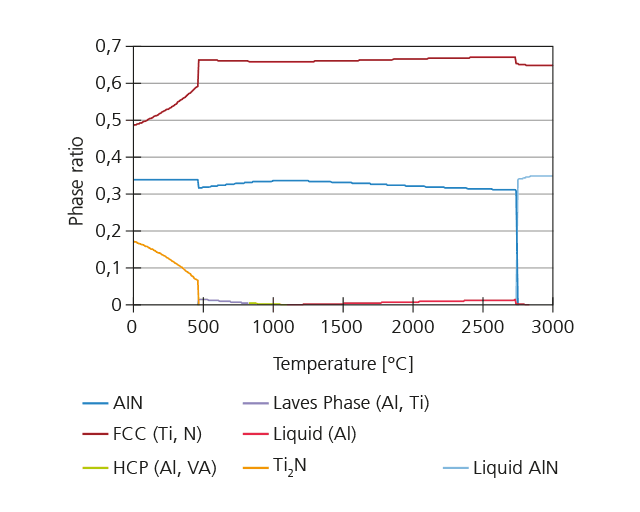Computer-aided simulation is a key component in today’s research and development work. This also increasingly applies to the materials sciences. With the CALPHAD method (CALculation of PHAse Diagrams), which is based on the calculation of phase equilibrium states and thermodynamic properties in a defined system, material properties can be calculated. This enables, for example, testing alloys regarding their suitability for specific procedures and applications, the development of a better understanding of processes taking place within the material, and a targeted optimization of alloy compositions and layer systems.
Thermodynamic modeling of material alloys using the CALPHAD method






Electron beam treatment of Ti(1-x)AlxN layers on quenched and tempered steel
At the Fraunhofer IST, the simulation software Thermo-Calc was utilized for the electron beam treatment (EBH) of Ti(1-x)AlxN layers on quenched and tempered steel. Interesting insights into material properties were thereby obtained. Prior to electron beam treatment, the focused ion beam (FIB) specimens exhibit a periodic morphological layer structure which is caused by substrate rotation during the coating process. Over the course of the EBH, this structure of the sublayer disintegrates and a matrix structure with globular inclusions is formed (see adjacent Figure). The processes which lead to the phenomenon can be explained with the help of a chemical analysis and simulation by means of Thermo-Calc.
The analysis
Phase and state diagrams for the different areas within the material, which were initially created using the Thermo-Calc software, show that the microstructures of the compound layer and the sublayer differ substantially. The TiAlN layer consists largely of cubic face-centered solid solution and aluminum nitride, while in the sublayer, a hexagonal close-packed solid solution and a Ti2N phase are primarily formed. The variation of the element concentrations by the measured values shows, that for certain chemical compositions, liquid aluminum precipitates at temperatures from around 1000 °C (see adjacent diagram above). Local temperatures of considerably more than 1000 °C can indeed be achieved through the influence of the electron beam, so that aluminum precipitates in the corresponding areas and subsequently resolidifies. Moreover, further material properties, such as solidus temperature and density, were calculated in dependence on the chemical composition. The progression of the solidus temperature then attains a low point between 35 and 45 at% nitrogen (see adjacent diagram below), where it corresponds approximately to the precipitation temperature of the liquid aluminum.
The results
The modeling of the processes during the EBH of TiAlN layers by means of Thermo-Calc provides a plausible explanation for the observed structural changes. It suggests that small volumes are heated by the electron beam to local temperatures above the solidus temperature, so that liquid aluminum is precipitated, solidifies and remains in the cross section as globular precipitates with lower density.
Outlook
The CALPHAD method is applied as support in other projects. The simulation of diffusion processes in complex materials with the help of the additional software DICTRA is thereby gaining increasingly in importance.
This article is part of the annual report 2018.